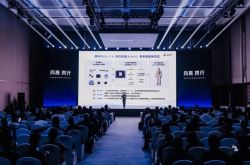A review of MWC2025: The main theme remains AI glasses driven by AI concepts
![]() 03/07 2025
03/07 2025
![]() 491
491
By VR top Wan Li
Today, the internationally renowned electronics exhibition MWC concluded in Barcelona, Spain.
MWC is one of the most influential mobile communication industry events globally, alongside CES and IFA as the three most influential international electronics and technology exhibitions. The MWC exhibition brings together the world's top communication equipment manufacturers, operators, tech companies, and industry experts, covering cutting-edge fields such as 5G, artificial intelligence, the Internet of Things, and smart devices.
This year's MWC was scheduled from March 3rd to 6th, with the theme of "Converge. Connect. Create.". The official website information indicates that this MWC was the largest in the past five years, with over 100,000 attendees and more than 2,500 exhibitors.
Among these exhibitors, if searched by the "Metaverse/VR/AR" tag, the total number of exhibitors is 93; if searched by the "AI" tag, the number of exhibitors reaches 839, demonstrating the popularity of AI.
Of course, MWC is also a feast for domestic manufacturers, with over 300 participating companies. Well-known enterprises such as Xiaomi, Honor, ZTE, Lenovo, Xpeng, Unitree, China Mobile, China Unicom, and China Telecom made collective appearances. Huawei even directly rented the entire Hall 1, with a booth area of 9,000 square meters, showcasing its grandeur.
The following will further review the noteworthy VR/AR new products, new technologies, and new trends at the MWC exhibition.
The Metaverse sector is dominated by startups, with relatively few Chinese companies
Based on the "Metaverse/VR/AR" exhibitors at this MWC, the author has compiled a table as shown below, revealing several pieces of information: There are relatively few domestic companies, with only 8 exhibitors from mainland China, Hong Kong, and Macao; most companies are from Europe, accounting for up to 61.2%, suggesting that the regional nature of the MWC exhibition is stronger than that of CES; and most exhibitors are small and micro-enterprises.

Furthermore, most of these Metaverse companies are VR/AR solution providers, with few terminal hardware manufacturers. Perhaps the most noteworthy among them is the new brand BleeqUp from Tribute to the Unknown. It made its debut during MWC and showcased its new AI sports glasses, BleeqUp Ranger. As one of the few new AI glasses during MWC, it attracted much attention on-site.
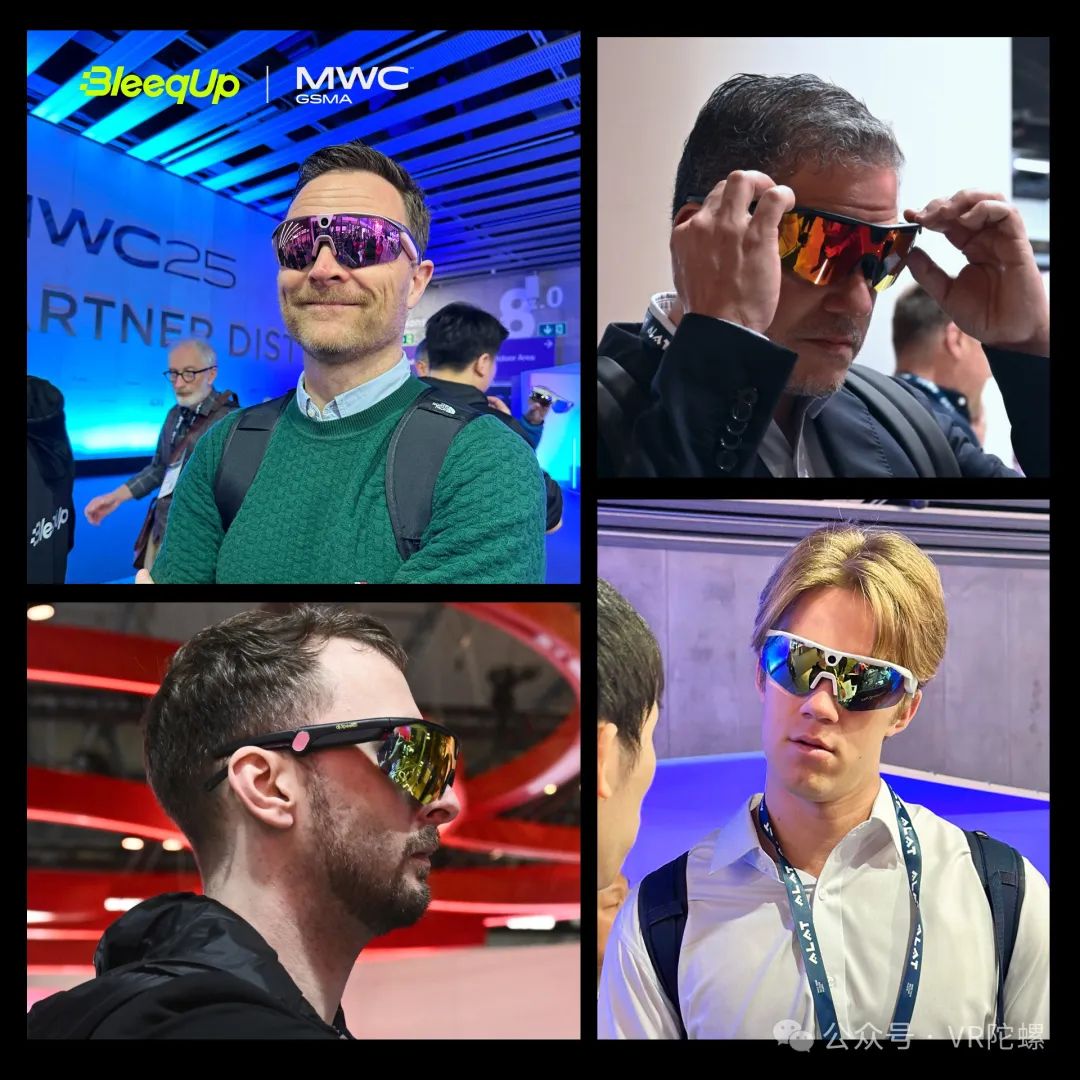
BleeqUp Ranger, Image Source: Online
In addition to well-known hardware manufacturers like Meta, HTC VIVE, and Infinity AR, the exhibition also featured some new faces, such as Inmersia from Spain and PROVUU from Switzerland. The former's official website showcases an AR glass, while the latter focuses on the AR ski goggles market. However, both companies' products are still in the "PPT" stage, with specific parameters and release dates unknown.

AR glasses from Inmersia, Image Source: Online
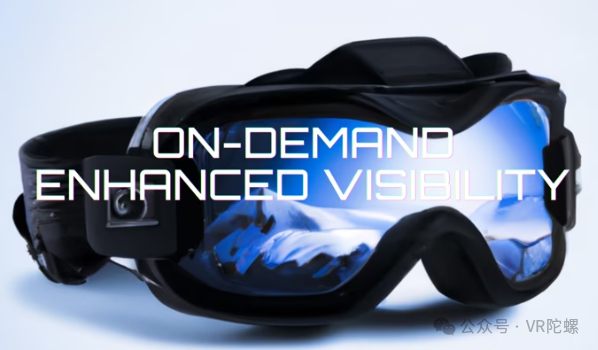
AR ski goggles from PROVUU, Image Source: Online
In other aspects, the author believes that there are also some technological companies with great potential value, such as VoxelSensors from Belgium and Exarion from South Korea. They have developed targeted AI vision/audio chips, laying the foundation for the emergence of all-weather AI. Yunhe Technology's OIS solution from China will further enhance the photography performance of AI glasses.
Additionally, STMicroelectronics had a significant presence at this MWC. The company aims to target more vertical, low-power, AI wearable devices such as AI glasses and has provided chip support for new glasses from Transsion and Quanta Computer. The market options for AI glasses SOCs continue to increase.
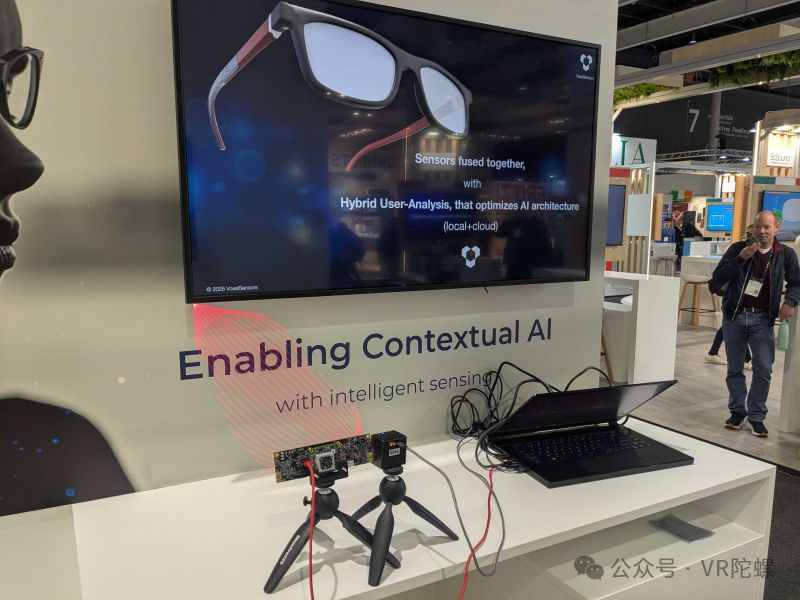
Image Source: VoxelSensors
An overview of new hardware products: Another smartphone manufacturer enters the market, and remote wireless charging technology
Many people may still remember the frenzy of AI glasses during the CES exhibition in January this year, when a large number of new hardware products emerged in the exhibition hall, overwhelming visitors. During MWC, although the number of VR/AR new products decreased, there were still some noteworthy new products and manufacturers.
BleeqUp
Tribute to the Unknown developed the split AR glasses ARKnovv A1 in 2022 and has now further expanded into the AI glasses sector, showcasing its new AI sports glasses, BleeqUp Ranger, at the exhibition. Based on feedback, BleeqUp Ranger was one of the popular exhibits at MWC, with a steady stream of visitors experiencing it on-site.
In terms of main functions, BleeqUp Ranger is similar to other AI glasses, supporting music listening, photography, video recording, AI assistants, etc. The difference lies in its targeting of outdoor sports segments such as cycling, hiking, and fishing, with many functional optimizations.

BleeqUp Ranger is equipped with a 16-megapixel camera and has developed a dedicated EIS algorithm for bicycles, capable of "recording 1080P video for up to 1 hour". When used in combination with an additional battery pack installed on the helmet, the recording duration can even reach 5 hours.
The glasses support AI editing, automatically selecting the best moments from photos and videos.
They feature open speakers that provide clear sound quality even at high speeds and support intercom functionality.
The glasses' outer lenses are replaceable and compatible with prescription lenses, with an IPX4 protection rating and a weight of less than 50g.
In other aspects, Bleequp Ranger uses the Qualcomm Snapdragon W5 chip, has a ROM of 32GB, and supports ChatGPT. The product price has not been clarified, but the Bleequp official website states that reservations of $9.9 can be used to deduct $150. VR top understands that Bleequp Range will be launched on Kickstarter at the end of this month, and in May this year, Bleequp Ranger will also collaborate with Formosa Optical for a co-branded event.

Transsion
There were rumors that Xiaomi would release AI glasses soon, but unexpectedly, another smartphone manufacturer, Transsion, beat them to it. Transsion showcased two new glasses at the exhibition, one of which is the Tecno AI Glasses. This pair of glasses does not have a display function but focuses on experiences such as photography and AI voice assistants (based on the company's internal Tecno AI). AI supports functions such as object recognition, information summarization, and memos. Additionally, thanks to its own mobile phone and PC ecosystems, Tecno AI Glasses has many highlights in terms of ecological interaction, such as automatically summarizing and announcing mobile phone notification messages.
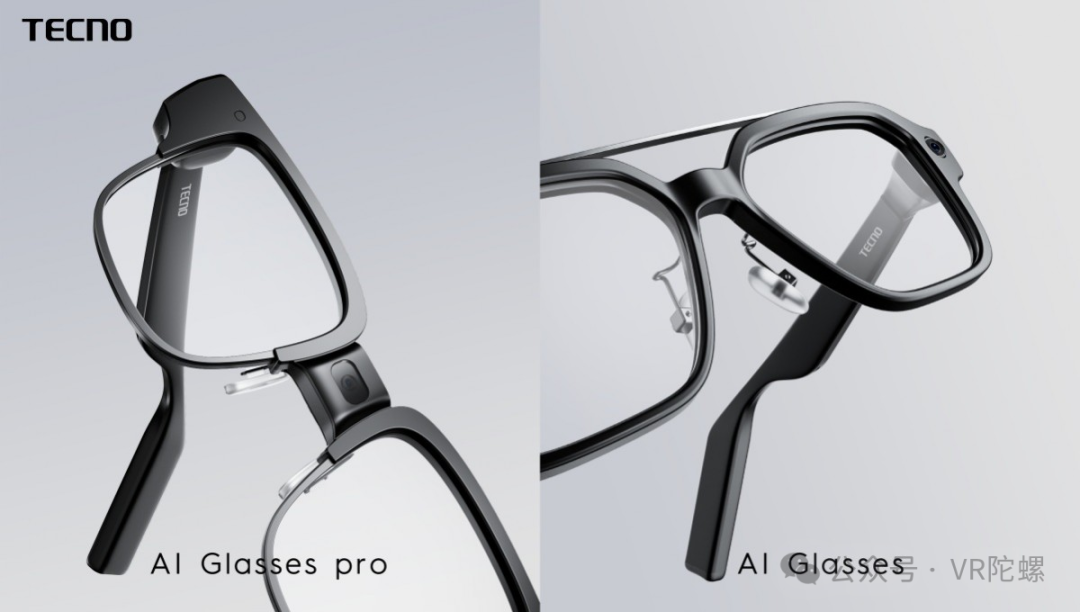
Tecno AI Glasses Pro further introduces a binocular single-green Micro-LED screen based on the former, with domestic company Mojie Technology serving as the overall supplier for this product. Thanks to the introduction of the screen, the glasses can further realize functions such as teleprompting and navigation. Additionally, as seen in the image, the camera of the screen version has been moved from the temple area to the center.
In terms of hardware parameters, both products are equipped with an OV50D COMS from OmniVision and a 250mAh battery. The Pro version has a screen FoV of 30° and a peak brightness exceeding 1500 nits. It is worth mentioning that the chips for these two pairs of glasses adopt an MCU+ISP solution, with the MCU coming from STMicroelectronics' STM32N6. Information on the launch dates of these two products is still unclear.
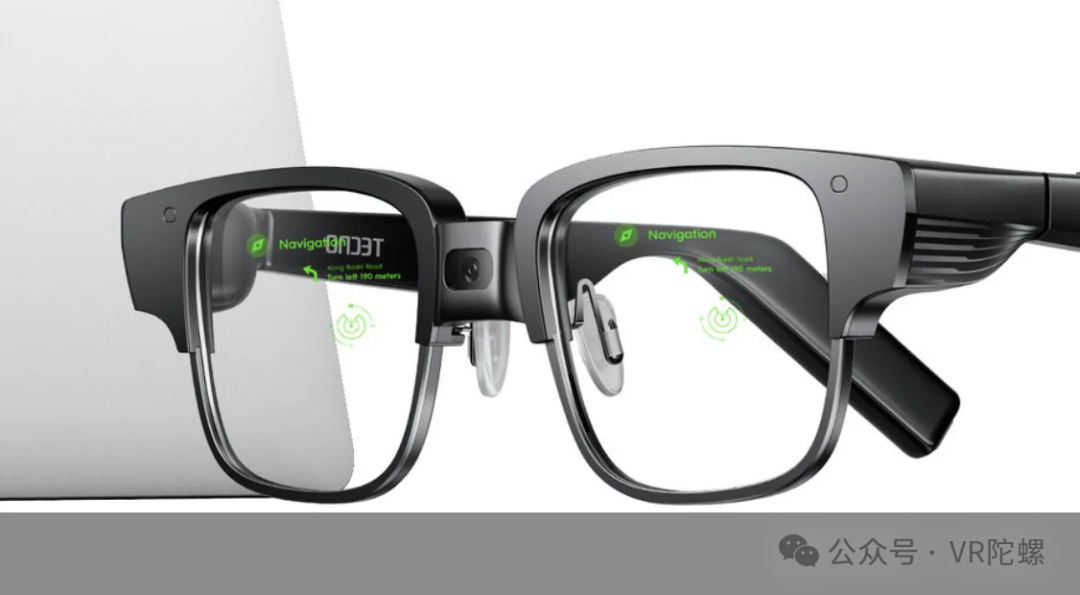
XPANCEO
This is an ultra-small near-eye display device developer established in 2021. The company is currently developing AR contact lenses that are even more sci-fi than AR glasses. This year, XPANCEO brought three new AR contact lens prototypes.
One of the prototypes aims to solve the battery life issue of AR contact lenses. As shown in the image below, it can be wirelessly charged based on a glasses case. What's more special is that its wireless charging range is large, basically ensuring that the contact lenses are always ready for use. Many may worry about safety hazards, but XPANCEO states that the radiation levels it generates are similar to other wearable devices.
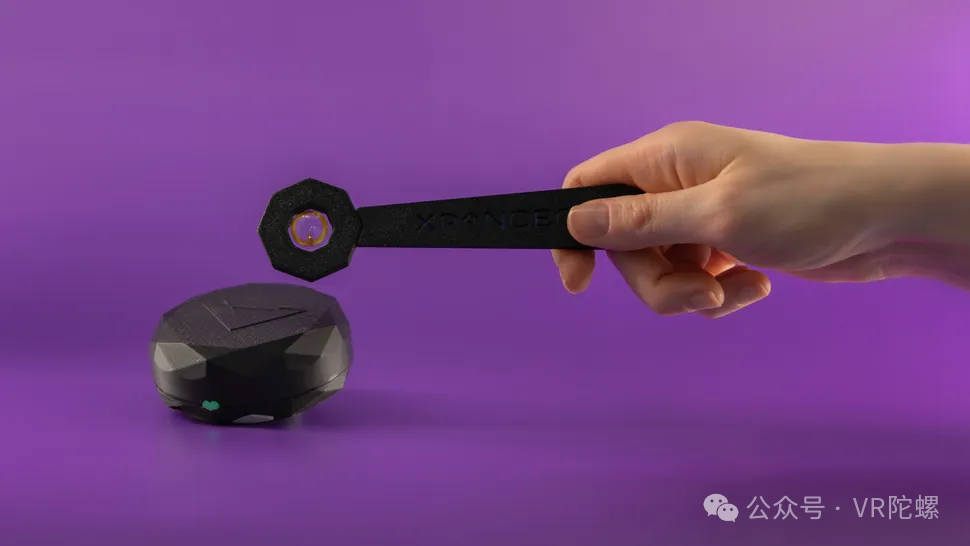
The second prototype integrates biosensors that can detect human body indicators such as glucose, cortisol, estradiol, estrone, and progesterone. The third prototype integrates an intraocular pressure sensor, which can be used for early detection of glaucoma, among other things.
It is worth noting that these devices are currently in the early prototype stage and are still some distance from commercialization.
Infinity AR
This year, Infinity AR brought its AI glasses full-link solution, the SW3030, to the exhibition. The glasses are equipped with an AR1 chip, supporting experiences such as photography and AI interaction. Additionally, the product adopts an ultra-lightweight design, weighing only 39g without lenses.
Although the SW3030 has also been showcased at previous exhibitions such as CES, this year's exhibit offers many more software experience features, such as the "Infinity AR Mobile Assistant", which, combined with the AI cloud framework, supports seamless switching between local and cloud computing power, providing an efficient and convenient intelligent experience. Furthermore, Infinity AR stated that "the full-link solution helps customers quickly productize and shorten the mass production time to 4-5 months, accelerating the popularization of AI smart glasses."
Judging from the feedback at the event, these domestic and foreign guests showed great interest in cutting-edge consumer electronics devices such as AI glasses, and the exhibition hall was filled with many customers coming to experience and inquire.
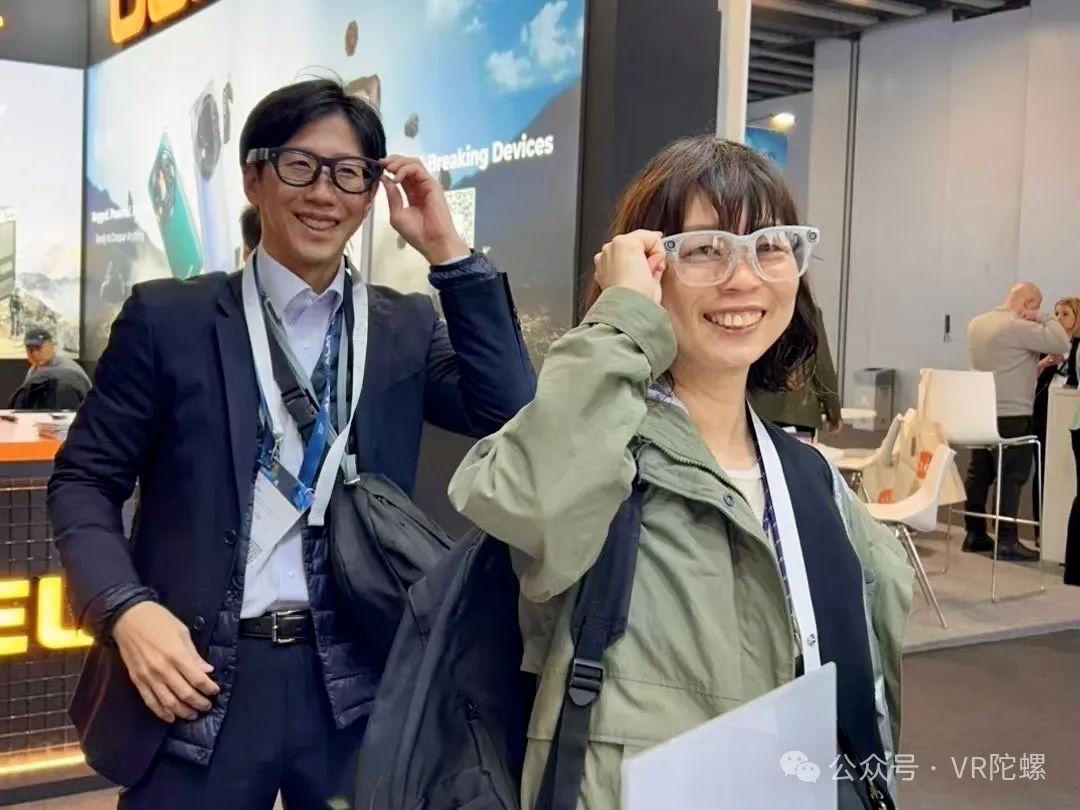
Everysight
Everysight is an Israeli smart glasses developer founded in 2014 as a spin-off of the Israeli defense contractor Elbit Systems.
During MWC, Everysight showcased an AR glass called Maverick II (which was also showcased during CES). This pair of glasses focuses on outdoor usage scenarios such as cycling and running. The company has developed a supporting E·sport AR sports APP for the glasses, which can be used for navigation, route recording, sports competition, heart rate monitoring, and more.
As Maverick II has not been released yet, there is still not much information available. We can refer to some configurations of the first-generation glasses: released in 2023, equipped with a full-color Micro-OLED screen with a resolution of 640×480, weighing 47g, IP55 protection rating, supporting prescription lens switching. Maverick 1 does not support photography and is priced at $399.
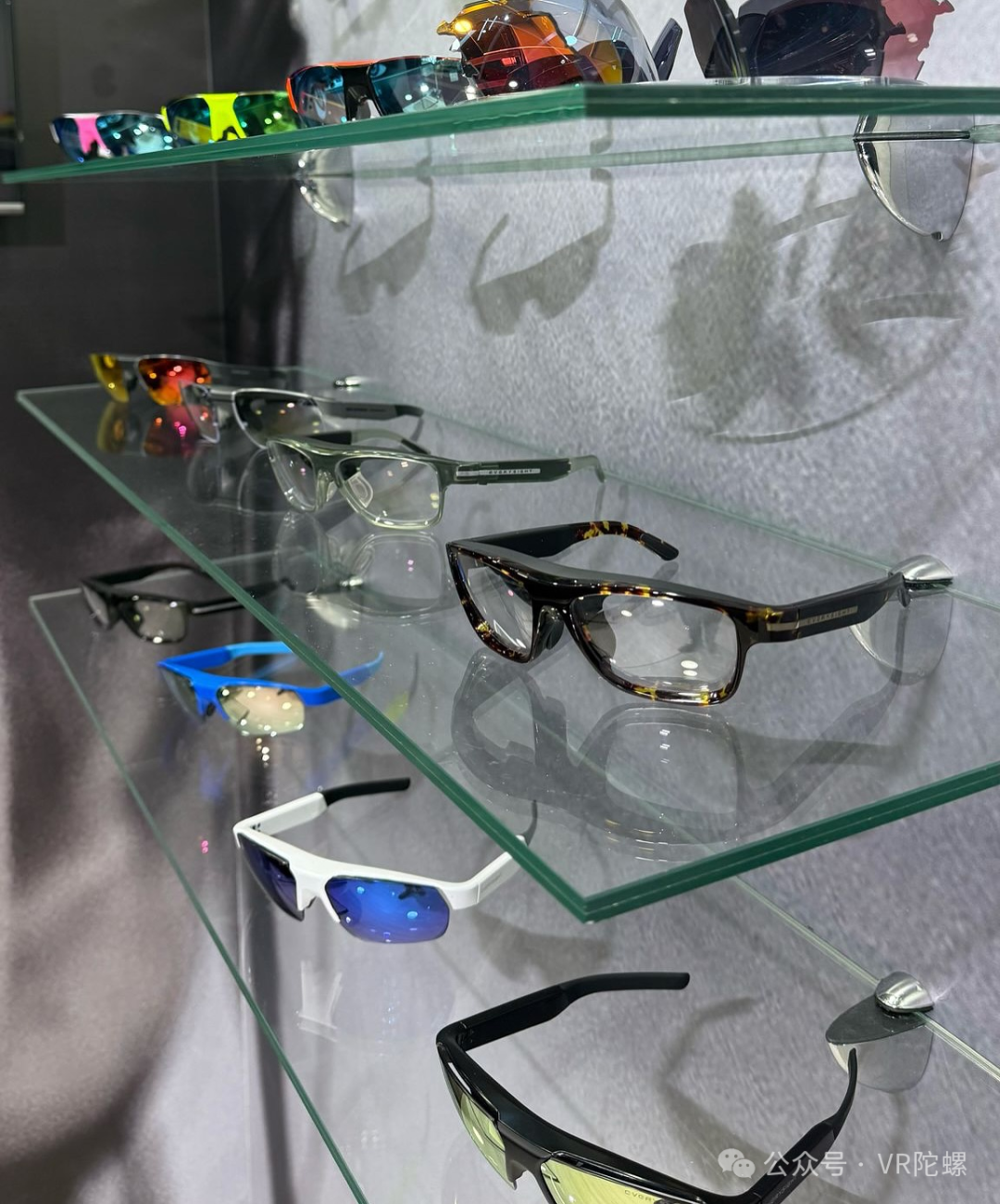
Samsung
During MWC, Samsung's new head-mounted display, Project Moohan, was exhibited at the booth. Unfortunately, similar to this year's "Galaxy Unpacked" conference, no wearing experience was provided on-site.
Project Moohan made its debut at Google's conference last December. It is the first device to run the Android XR operating system, equipped with a Snapdragon XR2+Gen2 processor and dual 4K Micro-OLED screens. There are rumors that Project Moohan will officially go on sale this year.
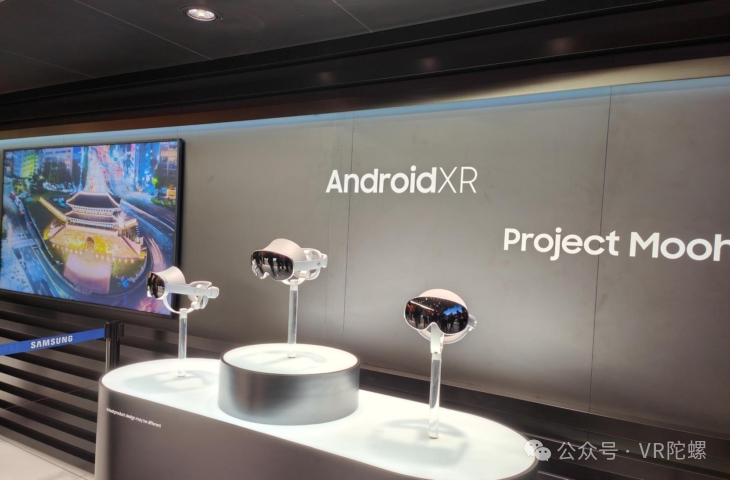
Star Era Meizu
Star Era Meizu exhibited its AI full-ecosystem products, with AI/AR as a major highlight. On display were the split-type AR glasses StarV View and StarV Air 2, both released at the end of last year. Key specifications include the StarV View equipped with a Micro-OLED screen equivalent to 188 inches, a peak brightness of 700 nits, support for myopia adjustment from 0 to 600 degrees, and a weight of 74g.
The StarV Air 2, on the other hand, is an AR glass that adopts a single-green Micro-LED solution, with a screen resolution of 640×480, a FoV of 30°, and a weight of just 44g. The glasses integrate a series of functions such as AI voice assistant, navigation, translation, and teleprompter, with a starting price of 2799 yuan.

Rokid
Rokid showcased three glasses products: Rokid V3, Rokid X3 Pro, and Rokid Air 3S. The Rokid V3 and Rokid X3 Pro were released in January this year. The former is an AI glasses product equipped with the AR1 chip and weighing only 39g, with a starting price of 1799 yuan and is already officially on sale.
The Rokid X3 Pro is its latest flagship AR glasses, equipped with binocular full-color Micro-LED screens and using a self-developed optical engine with an optical engine volume of only 0.36CC. Additionally, the product is equipped with an embossed grating waveguide based on etching technology, which can effectively reduce rainbow moire issues by 95% and reach a brightness of 2500 nits. It is reported that the product will be launched in Q2 this year.
The Rokid Air 3S is a split-type AR glasses product making its debut at MWC. In terms of key specifications, it still uses the combination of Birdbath+Micro-OLED, supports 3840Hz high-frequency dimming, has a contrast ratio of 200000:1, an SRGB color gamut of 154%, and an equivalent display area of 201 inches. The glasses adopt a four-speaker structure, which is expected to provide good sound quality.
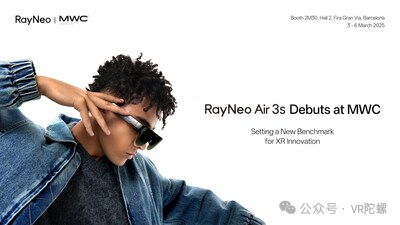
HTC VIVE
This year, HTC VIVE showcased its new MR headset, VIVE Focus Vision, which was released in September last year. It uses Fast-LCD+Fresnel lenses, with a resolution of 2448 x 2448 per eye, supports battery replacement, DP mode, full-color see-through, and is targeted at enterprise customers.
In addition, HTC VIVE also showcased a series of industry solutions at the venue, such as VIVE Mars, a virtual production tracking solution focused on the film and television production industry, and VIVERSE Create, a low-code 3D content creation tool. Moreover, HTC VIVE set up a large VR space project at the venue this year, featuring an immersive exhibition on legendary architect Antoni Gaudí, attracting a large number of visitors.
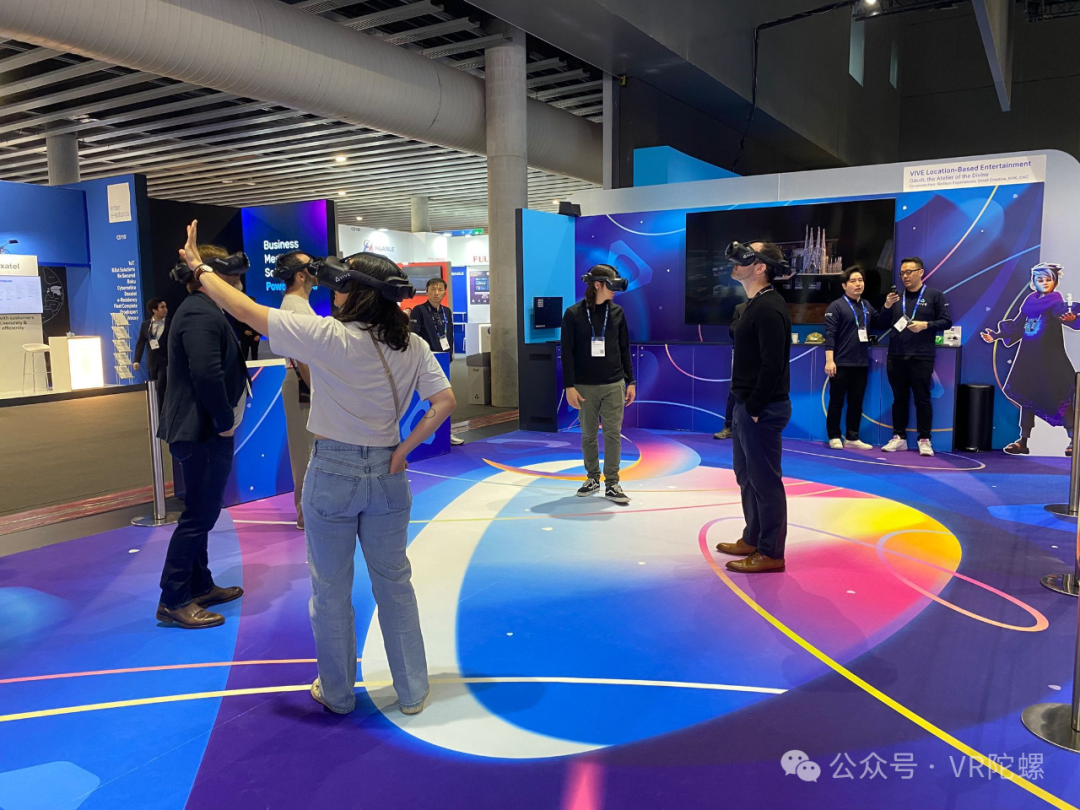
Meta
Meta showcased the Ray-Ban Meta during MWC. Although it is not a new product, it remains a popular exhibition area at MWC due to the prevalence of the concept of AI glasses.
During MWC, foreign media reported that Meta will launch a new limited edition Ray-Ban Meta in March this year, with only 3600 pairs available. It is reported to be a designer collaboration model. It is worth mentioning that Meta also released a transparent limited edition Ray-Ban Meta last year, with a limited quantity of 7500 pairs, which was very popular and sold out quickly.

Cellid
Cellid is a waveguide manufacturer in Japan that has developed products such as monochrome and full-color plastic waveguides and large field-of-view full-color glass waveguides. In February this year, the company secured a new round of funding of $13 million.
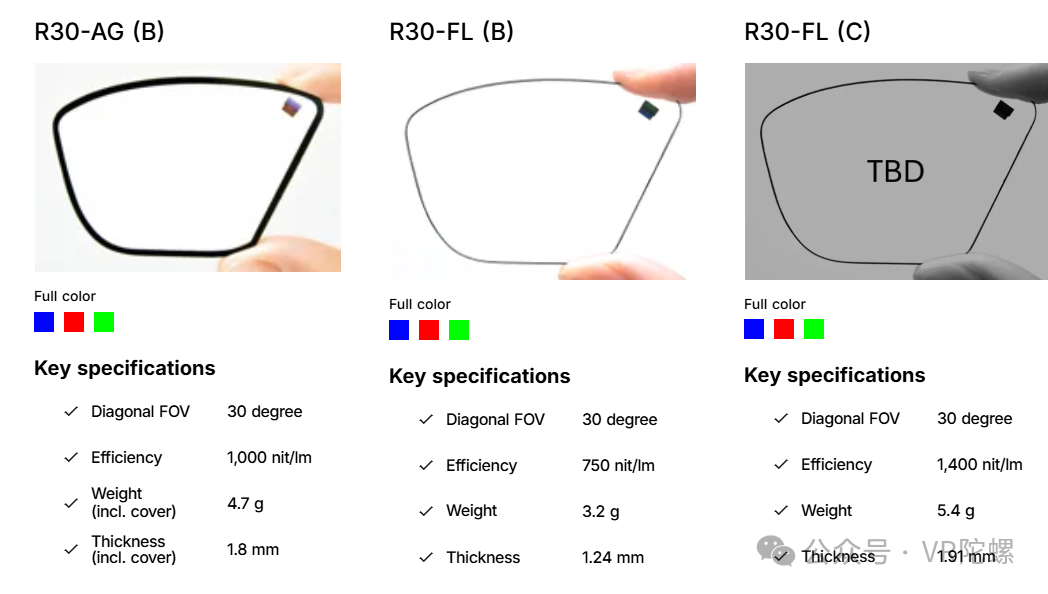
During MWC, Cellid exhibited an AR glasses reference design weighing about 58g, adopting its own waveguide optical solution and supporting multi-modal AI and other experiences. Relevant information indicates that Cellid will continue to improve its mass production system this year to accelerate the launch of its products.
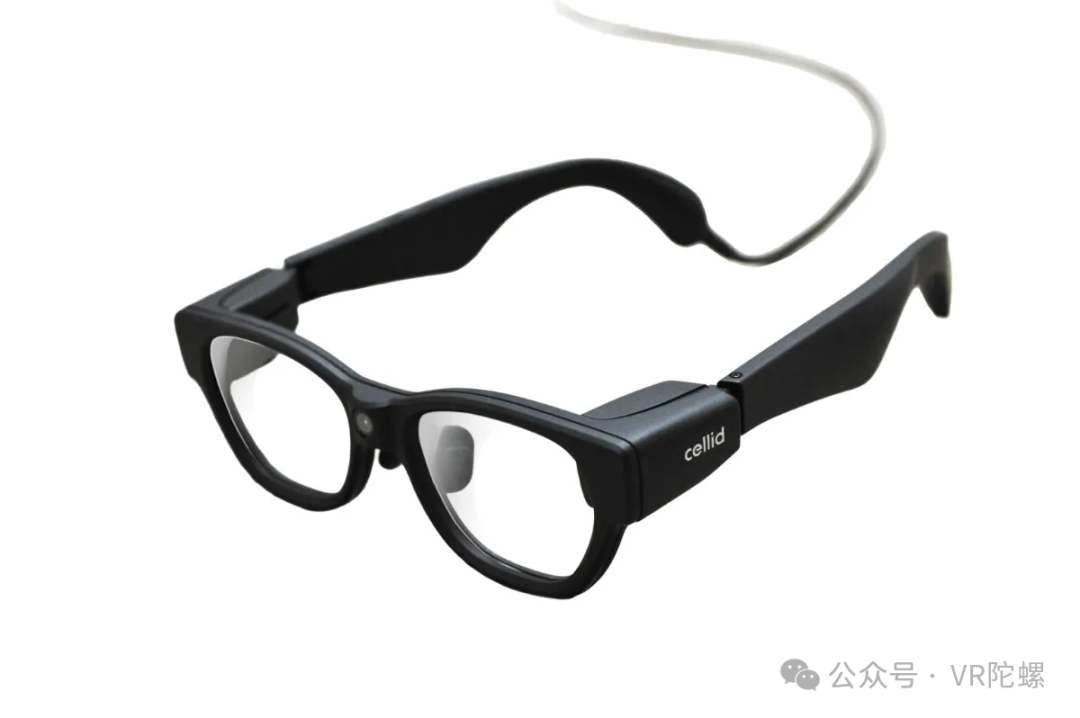
NTT QONOQ Devices
This is a joint venture between NTT QONOQ and Sharp, aiming at the XR field. Last year, the company released AR glasses named MiRZA, equipped with the Qualcomm Snapdragon AR2 chip and mainly targeting enterprise users. For more information, please refer to "Wireless Connection, 6DoF, Gesture Tracking, What are the Highlights of Japanese NTT Group's AR Glasses MiRZA?" During MWC, the company showcased the MiRZA with a built-in AR Japanese calligraphy practice mini-game, allowing visitors to experience it on-site.
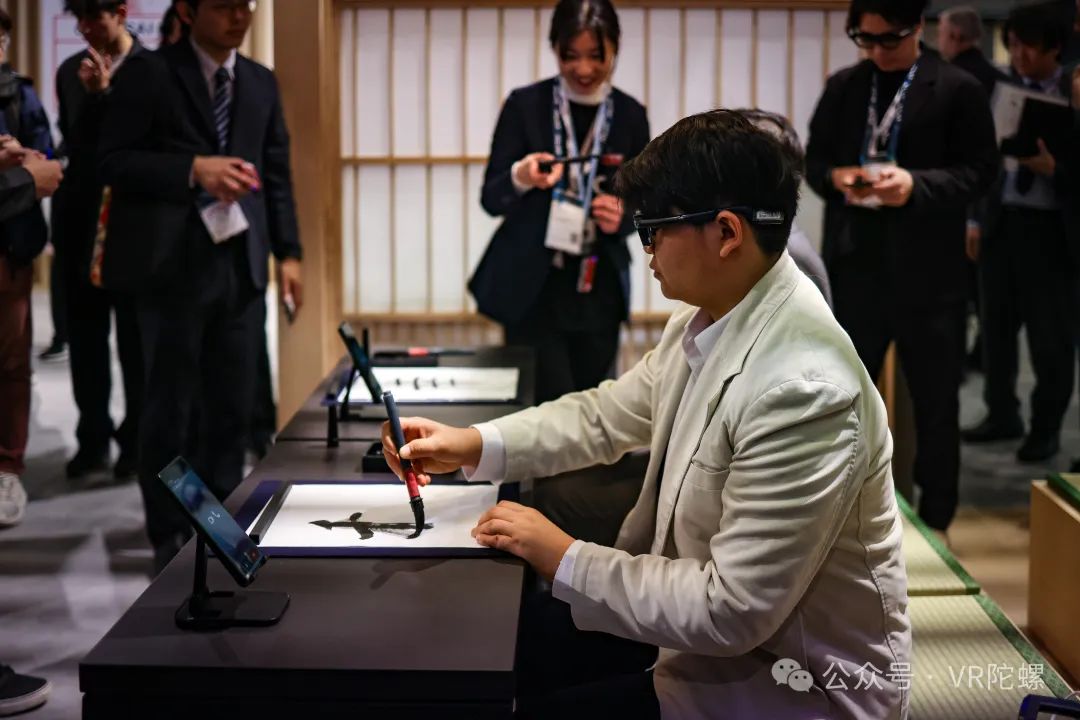
In addition to MiRZA, the company also showcased an AR glasses prototype, as shown in the figure below. Currently, information about this product is very limited. The official website introduction states that it is "a glasses-type device designed to make daily life more comfortable," equipped with a display screen and supporting functions such as navigation, translation, and AI dialogue. This pair of glasses will be targeted at consumers, and the specific release date has not been confirmed yet. (There are rumors that it will be in Q3 or Q4 this year)
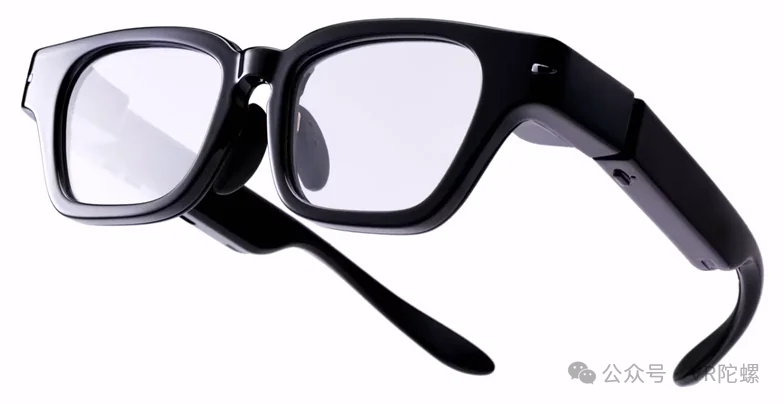
Quanta Computer
This year, Quanta Computer jointly exhibited an AR glasses prototype with ActiveLook, an AR glasses brand under French microdisplay technology developer MICROOLED, and STMicroelectronics. The product is named Light AR, with Quanta responsible for design and manufacturing, ActiveLook responsible for the software platform, and the chip provided by STMicroelectronics' STM32U5.
The announcement indicated that the design will allow customization using different optical components and display modules to suit specific applications. Additionally, LightAR serves as an important window to showcase STMicroelectronics' presence in the wearable chip field.
It is worth noting that in January this year, Vuzix also showcased two AI glasses reference designs, Ultralite Pro and Ultralite Audio, in which Quanta Computer was also involved in the processing and manufacturing business.
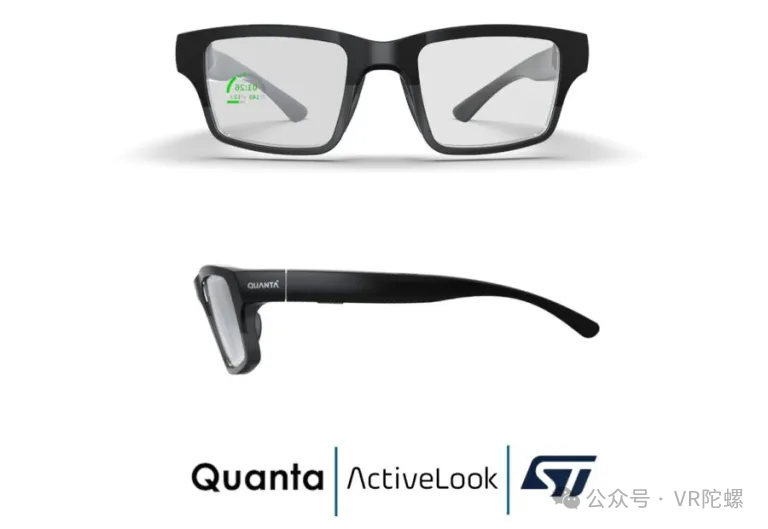
Conclusion
Overall, the number of companies, the density of new products, and the technical highlights at this year's MWC will be slightly inferior to those at CES. However, what remains unchanged is the strong trend of AI+ evident throughout the exhibition hall.
For the VR/AR market, there is a further increase in players entering the AI/AR glasses market, with OEM and OOM manufacturers attempting to expand this product category. The market is heating up, with functional innovations, scenario expansions, and increased market awareness being the processes currently experienced by AI glasses products.




